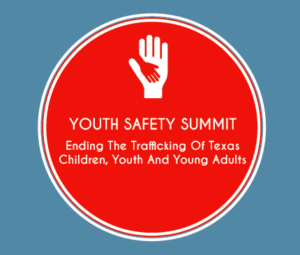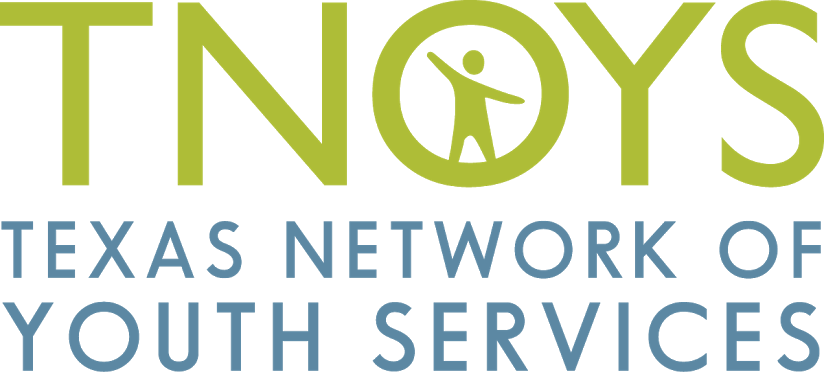 Attendees at yesterday’s Youth Safety Summit heard sobering stories and statistics about youth falling victim to human trafficking here in Texas, but they also left armed with new tools to fight the problem and encouraged about state leaders’ dedication to this important issue. The summit, hosted by TNOYS in partnership with Roy Maas’ Youth Alternatives and the UTSA Department of Counseling, featured speakers including Texas State Senator Carlos Uresti, leaders from the Texas Department of Family and Protective Services (DFPS), members of the Texas Governor’s Sex Trafficking Team, a survivor of trafficking, and other experts.
Attendees at yesterday’s Youth Safety Summit heard sobering stories and statistics about youth falling victim to human trafficking here in Texas, but they also left armed with new tools to fight the problem and encouraged about state leaders’ dedication to this important issue. The summit, hosted by TNOYS in partnership with Roy Maas’ Youth Alternatives and the UTSA Department of Counseling, featured speakers including Texas State Senator Carlos Uresti, leaders from the Texas Department of Family and Protective Services (DFPS), members of the Texas Governor’s Sex Trafficking Team, a survivor of trafficking, and other experts.
The Truth About Trafficking
A common theme across the presentations was that many people don’t realize just how serious the trafficking of youth is in our state – as State Senator Carlos Uresti shared in opening remarks, human trafficking is happening right here in our backyard – in fact, Texas leads the nation in calls to the national human trafficking hotline, and I-10 acts as the country’s main corridor for this crime.
Unfortunately, youth served by the state’s child welfare system are particularly vulnerable. One in five of the runaways reported in 2015 were likely sex trafficking victims, and 74 percent of these victims were in the care of social services or foster care when they went missing. The majority of the attendees at the summit were youth services providers who often work with children in the child welfare system, so the information shared at the summit is particularly critical to their work.
But Alan Schonborn of the governor’s office stressed that people must not let these statistics lead to misconceptions about the scope of human trafficking, and should remain aware that all youth and communities are potential targets for this crime. “This issue won’t become successfully addressed until people realize … that there are kids being trafficked in most – maybe all – schools,” said Schonborn. “And it doesn’t always start in high school and college, it’s also happening at the middle and elementary school levels.”
How to Help
One of the keys to addressing the issue of youth trafficking is to identify the victims, who are often in plain sight in malls, hotels, parks and other public areas. In his Sex Trafficking 101 presentation, expert Chuck Paul taught attendees how to recognize and help trafficking victims. He described characteristics to watch for, such as visible bruises or injuries, lack of eye contact, inappropriate clothing, and tattoos that appear to brand them as being the property of a trafficker. He suggested never intervening directly if you suspect a trafficking situation, but calling the police and serving as a “professional witness” by taking down detailed information such as descriptions of vehicles, people and locations involved.
Paul also shared information on organizations that are mobilizing people to help stop human trafficking. Examples include Truckers Against Trafficking, which educates truck drivers on how to spot and report instances of trafficking they may witness along highways, and the Exchange Initiative, which has created the TraffickCam app that anyone can use to snap pictures of their hotel rooms to help those trying to locate traffickers match up the backgrounds in online pictures.
Speakers also shared that trafficking victims face serious challenges as a result of the treatment they have endured, and stressed the importance of providing child-centered, trauma-informed care in helping them to recover. Angela Goodwin of DFPS explained that views about trafficking victims have evolved as people have learned more about the problem; while in the past victims were labeled as “juvenile delinquents,” professionals in the law enforcement, prosecution and child welfare systems now understand that trafficking victims are part of a vulnerable population and that minors cannot be considered to consent to the criminal activity they are part of.
What Texas Leaders Are Doing
Another theme that came across during the summit was that solutions to this problem are still in development, but that there is incredible momentum behind the effort among Texas’ elected officials. Andrea Sparks, with the Child Sex Trafficking Team in the Criminal Justice Division of the governor’s office stressed her team is continuously improving their processes and trying to learn as much as they can from other states and organizations. “No one really has best practices in this area,” she said. “We’re all at the forefront of this.”
Sparks and Schonborn emphasized that the governor’s team is dedicating significant effort and resources to achieve their bold vision of ending child trafficking in our state. Their efforts have included training frontline law enforcement officers to recognize signs of trafficking during traffic stops, bringing prevention education to youth and professionals in our schools, juvenile justice and foster care systems, and working with the Department of Public Safety to reduce demand for trafficking. They also shared with attendees a new Request for Applications from the governor’s office aimed building capacity in the state to recognize, recover and restore child sex trafficking victims by investing in community based drop-in programs, specialized foster care programs, and advocacy programs.
Senator Uresti emphasized his and his fellow legislators’ commitment to the issue, citing several pieces of legislation that have passed in recent sessions. “It’s refreshing to finally see that the Legislature is taking this issue very, very seriously,” he said. “We still have a lot of work to do but we are finally taking some steps in the right direction, and we’re putting our money where our mouth is.”
As Cynthia Borsellino, a trafficking survivor and volunteer with Traffick911, reminded the attendees in her remarks, “There are still women trapped in this but they’re worth us fighting for them, finding them and connecting with them. They’re not rebellious teenagers, they’re children looking for love and security.”
TNOYS would like to express our gratitude to the many individuals and organizations who came together to make this event possible, including our partners, speakers/presenters, and those who attended.
